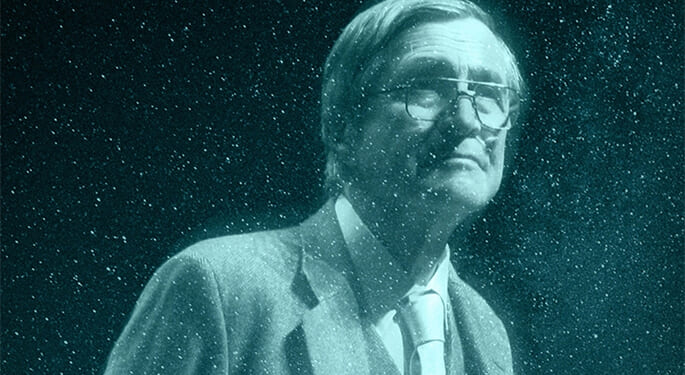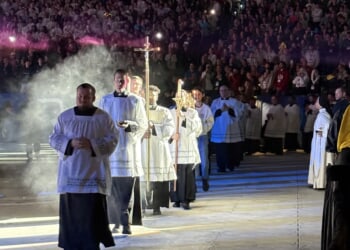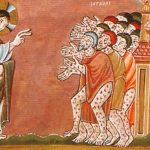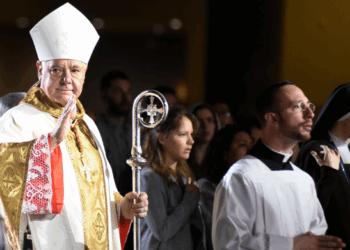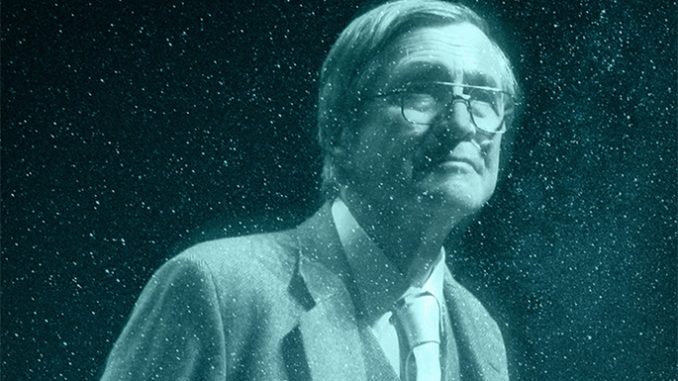
For Catholics, the end of October marked the beginning of Hallowtide—All Hallows’ Eve, or Halloween, All Hallows (All Saints), and All Souls. For Protestant Christians who have maintained some connection with the first Protestants, October 31 is celebrated as Reformation Day, which commemorates Martin Luther’s posting of his Ninety-five Theses.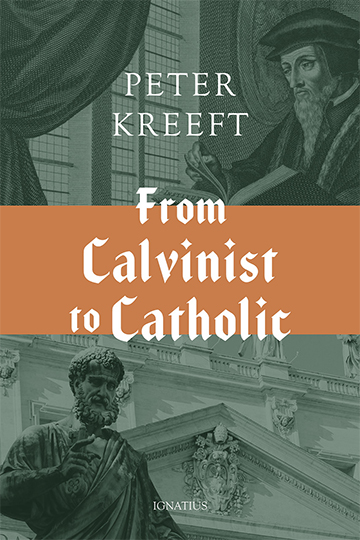
I grew up celebrating Halloween (the secular version) and, because my parents started attending a Calvinist congregation (Christian Reformed) when I was young, we sometimes attended Reformation Day services. Proudly Calvinist in my teenage years, I argued the questions of predestination and free will with one of my best (Baptist) friends for endless miles while hiking at Philmont Scout Ranch in New Mexico. I guess we each won in a way: I later became Catholic, and he a serious Presbyterian.
Ironically, it was at Calvin College (now University) that I began to question whether the Protestant Reformation was, as Jaroslav Pelikan said, “tragic but necessary.” Many writers along the way nudged me toward Catholicism. One was 1959 Calvin alumnus Peter Kreeft, who taught philosophy at Boston College.
In my freshman year, a friend loaned me Kreeft’s delightful books The Unaborted Socrates and Between Heaven and Hell: A Dialog Somewhere Beyond Death with John F. Kennedy, C. S. Lewis, and Aldous Huxley. The first imagined Socrates sprang to life in modern times, engaging a doctor, a philosopher, and a psychologist in dialogue on the topic of abortion. The second unlikely grouping for a discussion of competing views of the world was selected because all three died on November 22, 1963.
I devoured both quickly, finding Kreeft’s pithy prose amusing and provocative. That Kreeft was Catholic was an oddity but not off-putting. He loved my hero C. S. Lewis, whom he made represent traditional Christianity in that second book—not the nominally Catholic Kennedy.
Later, I felt both admiration and kinship with Kreeft. I, too, became Catholic after Calvin. I also went to Fordham University for a doctorate, though mine was for theology, not philosophy. I read more of his books, always finding them overflowing with off-handed good humor, provocation, and a personal honesty that charms even when you don’t agree with the point he’s making.
Now 88, Kreeft has written yet another book that I felt compelled to read before Hallowtide and Reformation Day. From Calvinist to Catholic, Kreeft tells us, was produced only “because Mark Brumley, my Ignatius Press editor, never stopped politely badgering me to write it.” Along with that aforementioned personal honesty, he adds, “Even now I’m not certain it is not a mistake.”
It is not a mistake.
Though the title might imply the book is narrowly focused on Calvinism and Catholicism, it is really a memoir and conversion story recounting what goods Kreeft gained as an Evangelical of Calvinist persuasion and how they were fulfilled in the Catholic Church. It is, to put it in the Beantown dialect he has no doubt gotten used to in sixty years at Boston College, a kind of Apologia Pro Vita Pete-a.
The first ten chapters are almost purely autobiographical, though told with an eye to his religious development. Kreeft was born in 1937, an only child of Dutch Calvinists living in New Jersey. Kreeft’s memory of his parents, particularly his father, is one of gratitude for true piety, even if he also recalls limitations to their worldview. They modeled Christian faith and taught him powerful lessons about love and fidelity to God and each other. Kreeft’s father even learned Greek in his eighties to better read the Bible.
The family attended services both Sunday mornings and evenings. (His father also went on Sunday afternoons for Dutch services and Wednesday night for prayer meetings.) Bible reading and prayer preceded each meal. Though Sunday school was “a bit boring,” Kreeft never objected to any of his religious upbringing except the “long extemporaneous prayers,” explaining that he “never felt ‘natural’ about non-liturgical, personal prayers in public.” Kreeft’s later discovery of “the poetry of Anglican, Orthodox, and Catholic liturgical languages” provided “the joy and beauty that I unconsciously felt lacking in my Calvinist style of Christianity, even though I was convinced of its truth and goodness.”
Though Kreeft claims he was more into “pranks” than piety, he decided to go to the Calvinist school, Eastern Christian High, rather than his local public school—a fact that his father took as evidence of Christian maturity. For college, he decided to travel to Grand Rapids, Michigan, to attend Calvin College, the intellectual nerve center of Dutch Calvinism. There, he decided to major in both English and philosophy (the same as I did—more kinship!). Unimpressed with the Neo-Calvinist philosophical luminary Evan Runner, he nearly dropped the philosophy major. But another professor advising students told him to give it another chance and take a course from Professor Jellema. Kreeft followed the advice and discovered later that the adviser who had made the suggestion was none other than William Henry Jellema himself.
Kreeft followed through on the philosophy and especially on the question of how to know that Reformed or Calvinist Christianity was the right path. He had been spurred particularly by a late-night bull session in the dorm about why Calvinists don’t pray to saints. While the roommate who started the conversation was probably just getting the argument going, it sparked something in Kreeft that burned hotter when he took the course in church history and began to wonder who would feel more at home in the early Church if a Protestant and a Catholic were to time travel back.
Kreeft addresses the core of his intellectual conversion to Catholicism more fully in the middle section of the book (chapters 10-20). The tenth chapter covers the most important anti-Catholic objections that Kreeft dealt with on his way. Though he does have a chapter on the three “Solas” and one on the “Five Points of Calvinism,” this section answers a host of objections that many Protestants who do not identify as Calvinists will also have about Mary, the communion of saints, liturgy, sacraments, and more.
Those looking for the kind of deep inside-Calvinist-baseball needed to answer particular Calvinist authors will be disappointed. Kreeft admits his title might be misleading since Calvinism never played anything like the role Catholicism did for him. Like many Calvinists, he considered himself “Christian first, an Evangelical second, a Protestant third, and a Calvinist fourth; and most Calvinists I know would agree with that hierarchy.”
The final ten chapters of the book cover Kreeft’s life post-conversion, though they are nothing like a full biographical sketch. Instead, we get accounts of how studying at Yale, where he was received into the Church by the Dominicans, then Fordham under Fr. Norris Clarke, S.J. (“who like Saint Thomas himself had the wonder of a child and the logical mind of a medieval scholastic”), allowed him to dig into the works of the great Thomas Aquinas. Though some Thomists will blanch at certain of Kreeft’s positions (animals in heaven, a real natural desire for God), Kreeft is at best an occasionally dissenting and not a doubting Thomist. In fact, he affirms that nothing spurs his prayer life like the work of St. Thomas.
Kreeft recounts how he ended up marrying his friend Sam’s girlfriend, Maria, who had served as his godmother at his conditional baptism. He also covers the beginnings of his teaching career at Villanova and a brief summary of his sixty years at Boston College. After an early experience with academic bureaucracy, Kreeft reveals the secret of his success: he agreed to teach an extra class for free each year if he could be excused from major committee work.
There are still plenty of good stories and anecdotes in this last section, but Kreeft does not wish to talk about himself forever. Or at least not the last sixty years in detail. The last few chapters have more of the personal Summa than a summary about them. Regarding what he has learned over sixty years, Kreeft lists twenty-one lessons that include his conviction that the Evangelical notion of a “personal relationship with Christ as Lord and Savior” is not wrong. It just needs a proper vision of how Christ is present in His Church. Similarly, in his chapter on what he is grateful for, Kreeft gives thanks for the witness of Calvinists to God’s sovereignty, which he only more strongly affirms as a Catholic.
Kreeft began his life in the world of the Reformed Church. He became a Catholic to preserve what he had learned before by fulfilling it. In his final chapter, he looks forward to the final step—death—and what likely awaits him there: the last, joyful but painful personal Reformation Day known as Purgatory.
We may hope Kreeft does not take that journey too soon. His witty and wise testimony still buoys audiences and entertains readers. But if he does, he will not be upset. For inasmuch as he sees God’s sovereignty, it is a rule of love, which is deeper than justice.
From Calvinist to Catholic
By Peter Kreeft
Ignatius Press, 2025
Hardcover, 191 pages
(Editor’s note: This review originally appeared in The Catholic Servant, and appears here with kind permission.)
If you value the news and views Catholic World Report provides, please consider donating to support our efforts. Your contribution will help us continue to make CWR available to all readers worldwide for free, without a subscription. Thank you for your generosity!
Click here for more information on donating to CWR. Click here to sign up for our newsletter.

